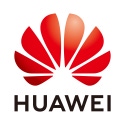South Korea has been an epicenter in the early 5G market, as carriers including LG U+ have been quick to build and launch services based on the technology. In a recent interview at Mobile World Congress 2021, Dr. Lee Sangchul, former CEO of LG U+, explained how the carrier has benefited from its early 5G entry, and how it promises even more opportunities in the future.
March 17, 2021

For South Korea’s LG U+, the strategy behind its growing 5G service is as much about speed to market as it is faster data throughputs – and its experiences offer a valuable case study for other providers.
In an interview during the recent Mobile World Congress Shanghai 2021, Dr. Lee Sangchul, former CEO of LG U+, explained how the carrier has benefitted from its early adoption and rollout of 5G services.
The benefits aren’t hard to see. LG U+ is South Korea’s third-largest mobile service provider, and it has arguably been the most aggressive in launching 5G services, using network equipment and handsets supplied by Huawei. At year-end 2020, about 2.76 million LG U+ customers – or about 16.5% of its customer base – subscribed to 5G service, according to the company’s fourth-quarter earnings report. It added 583,000 net 5G subscribers in the quarter, contributing to a 6.7% increase in LG U+ wireless service revenues. Based on this growth, the company projects its 5G customer base will constitute 40% of total customers by the end of 2021.
Network performance and a growing footprint are big reasons for the success of LG U+’s 5G service. A recent Root Metrics speed test report showed that LG U+ has the fastest 5G download speeds among South Korean mobile carriers, posting an impressive 476.5 Mbps throughput in Seoul. LG U+ also claims the largest 5G footprint in South Korea, covering 6,064 square kilometers as of December 2020.
Across all South Korean carriers, the 5G customer base stands at more than 10 million of the country’s 50 million population. So in terms of 5G, "I would say yes – we have entered the market successfully," Sangchul said. However, "it’s just the entry of the 5G market – it’s not even the advanced network fully grown."
That’s because speed isn’t 5G’s only capability – with higher reliability and lower latency, it also enables a range of new services now in the early stages of development. On the consumer side, LG U+ has already added 5G Augmented Reality (AR) and Virtual Reality (VR) applications, offering an entirely new video experience, Sangchul said. It also recently launched the 5G Smart Home Pack, pairing Internet of Things devices with 5G connectivity, and it recently staged a demonstration of a 5G-based self-driving car with autonomous parking capabilities.
But while consumer applications are grabbing the headlines, Sangchul thinks the greater opportunity may well be in the B2B space, where 5G applications promise to improve operations, productivity and revenue.
"5G is beginning to provide the new experience, new benefits, but not yet is it fully grown. And especially industries begin to realize that they could grow their outputs, say 50% or two times, three times more even with less resources – which means these new technologies replace resources," he explained. "They begin to realize that through means of not just 5G but edge computing, AI, IoT, cloud and big data – things like that. So it’s just blooming now, you know. And industries – they begin to realize that this is just a start and something new and better, and bigger things are coming with less resources. They will just realize it and they will go into that, and within three to five years the B2B area is much bigger than the B2C area."
These benefits, however, require carriers to move quickly in launching 5G services, he added.
"The telecom business is much different from the manufacturing business – once you invest, the return comes very slowly – for a couple of years. You have to understand that," Sangchul said. "And the second thing is, do it earlier than others. There are many benefits if you do it earlier. Wherever it is that you have early adopters – about 5-7% of the whole users – they come in anyway. And when you start earlier, then you get the first fruit – the first benefit."
At the same time, Sangchul sees 5G as not just a network technology but rather an entire ecosystem. So "the value of 5G is even more impressive, because if you use edge computing, AI and IoT and cloud and big data all along, then I would say 5G is not a network anymore – 5G is a big system that will provide you the real-time value to the right people. So if you realize the value of the people, then you will have a very successful 5G system."
Sangchul is not alone in seeing 5G as not just another, fatter data pipe. Granted, it has supported higher average revenue per user (ARPU) levels for LG U+, but "most importantly, measurements and discussions and experience from the real world show us that 5G can become much more than a productivity layer," said Dimitris Mavrakis, senior research director at ABI Research. The lesson providers can draw from Sangchul and LG U+ offer is that "5G that’s properly planned and deployed can become a platform for third parties."
This content is sponsored by Huawei.
Huawei Technologies Co. Ltd
You May Also Like









